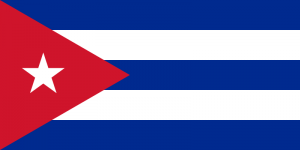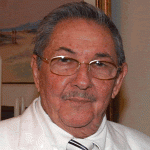By Elliott Brack, editor and publisher | Take any large organization you can imagine. Let’s say that this activity has been going on for 57 years. What would you think the organization would be like?
 Would it surprise you to think that among its millions of people, that some sort of informal internal structure would have developed? That structure would be the day-to-day way this group worked, the mechanism for insuring that the organization was performing as it should. Perhaps we could even use the word “Bureaucracy” in describing how it worked.
Would it surprise you to think that among its millions of people, that some sort of informal internal structure would have developed? That structure would be the day-to-day way this group worked, the mechanism for insuring that the organization was performing as it should. Perhaps we could even use the word “Bureaucracy” in describing how it worked.
Remember, this organization is 57 years old. By now people originally there have long retired, or even died. We are into a second, third and perhaps even fourth generation of key people in keeping this organization running.
Now think too: what if what is being described was a government of a country, for instance, Cuba? And what if its objectives were not always going well? You would think that in a Communist country, centrally run, like Cuba and its 11 million people, its leaders could click their fingers and see major changes, right?
Wrong!
We got that idea from a speech made by President Raul Castro recently in a two-hour appearance before the Cuban Communist Party. It meets only twice a decade, which says something in itself about its slowness to develop.
Five years ago, President Castro announced that Cuba would change. He had proposed 313 “guidelines” to stimulate what is essentially a stagnant economy, one entirely controlled by the Communist Party itself.
Guess what? Castro, citing a statistic from his own government, said that only 21 percent of the “guidelines” he suggested in 2011 have been carried out.
Can you imagine the cause?
Here are Castro’s own words addressing this problem: “The obstacle that we’ve confronted, just as we expected, is the weight of an obsolete mentality that takes the form of an attitude of inertia.”
Another way to say that: “Cuba’s bureaucrats.”
It’s true that all large organizations have bureaucrats. They often run the routine activities of any big corporation, non-profit, or government. Change always threatens them, their jobs, their livelihood, their families. Would they seek to deny change? Surely they would. In doing so, it might hold their country back. But it would protect them and their cronies.
It doesn’t matter to these officials if the country of Cuba has severe economy problems, if food is rationed and often scarce, if living conditions are not up to a par with some third world countries? After all, these bureaucrats are in a solid, secure position. They barely feel it.
 You can see the problems that President Castro is confronting. While the leaders of the country (and party) might want improvement and change, they are fighting an internal battle. And it may mean that the change Americans have hoped for in Cuba, in a softening of relations from the top, may be torpedoed by the underbelly of a bureaucratic government.
You can see the problems that President Castro is confronting. While the leaders of the country (and party) might want improvement and change, they are fighting an internal battle. And it may mean that the change Americans have hoped for in Cuba, in a softening of relations from the top, may be torpedoed by the underbelly of a bureaucratic government.
Cuba has made major strides in its Communist regime in two key areas: education and medicine. Education is free for all, while its universities, using up-to-date methods, train many of the skilled medical professionals for South and Central America.
But what of raising the Cuban standard of living, having sufficient foods, eliminating poverty and letting its people be free? Cuba still lags in these areas. It may take years to see improvements here.
The Castro years will end soon, with Fidel now 90 and Raul 84. What will come next?
One more thought: Is Cuba’s bureaucracy much different from that of the USA?










Follow Us